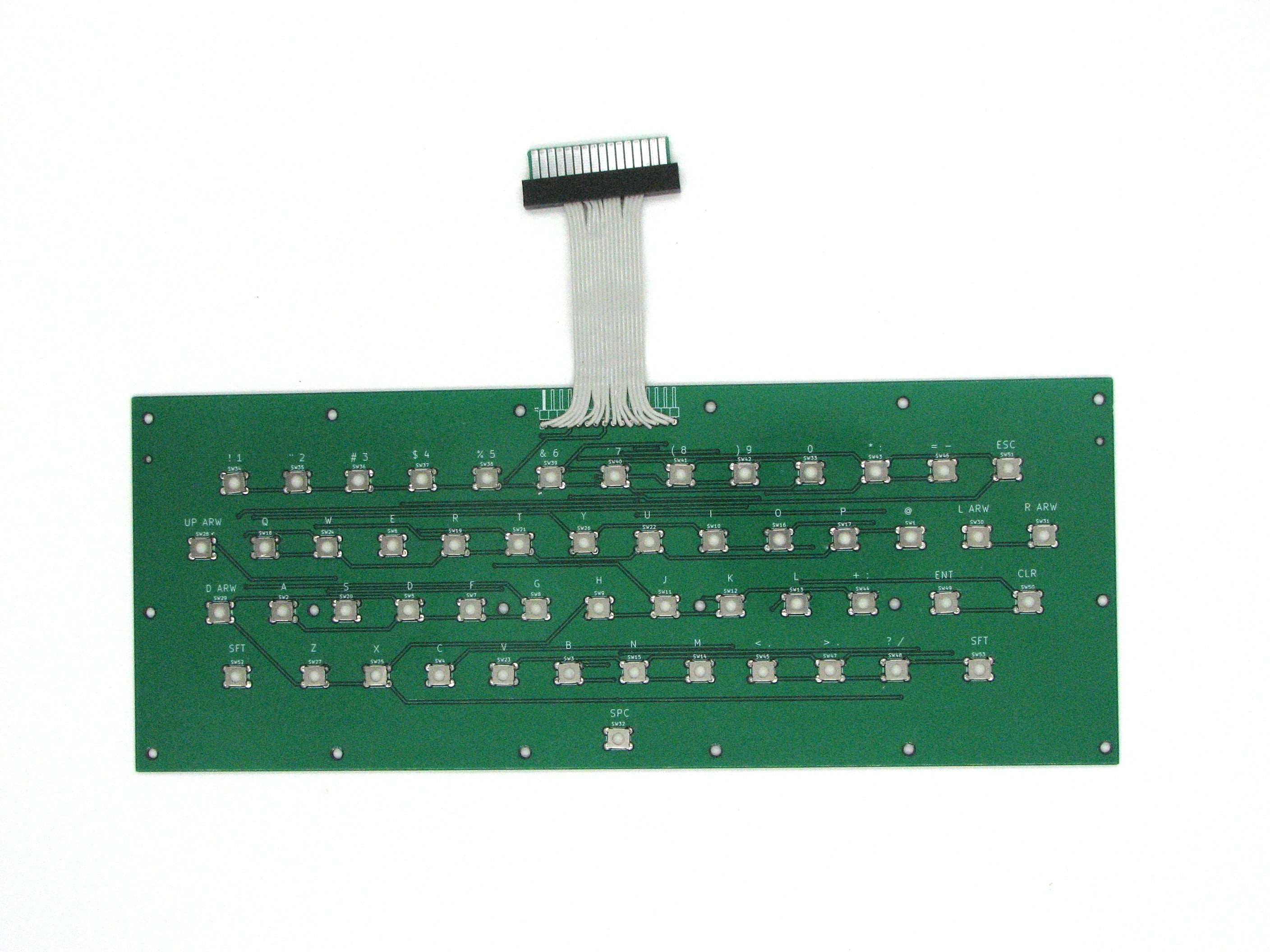resman
Veteran Member
Is it possible to try your CoCo1 keyboard on the CoCo2? I don't really know if they are pin compatible, but a cursory search seems to indicate they are.
Completely different style connectors unfortunately.Is it possible to try your CoCo1 keyboard on the CoCo2? I don't really know if they are pin compatible, but a cursory search seems to indicate they are.

Its always good to have a specific machine to test ram chips in. A c64 or apple IIe can test 4164 chips easily. An apple II or II plus can test 4116 chips easily. Etc Etc, you get the idea. Thats what I do instead of hunting and pecking and its cheaper than buying a specific RAM testing device.Thanks for writing this up. I just brought back a working CoCo2 from VCF East and after trying to run my target game (Sokoban) I found out it only had 16k. I purchased this "new" CoCo2 because my old one wouldn't show a good screen anymore. I followed the instructions and replaced the ram chips with 8 4164 chips I purchased off eBay for this project. I then added the jumper wire to the 64k jumper position on the main board.
When I fired it up it had a screen full of characters that looked like C's. It was green but it would not boot to Basic. When I tried the cartridge it filled the screen with blocks of color but it was a mess.
Hmm. I watched a few video and got the idea that it may be a bad ram chip. But how will I figure out which chip was bad? I purchased 10 chips and used 8 of them. I decided to just try with one of the chips and work my way through one chip at a time, assuming I had a good chip to swap in. I removed the first chip and replaced it with one of the unused chips. Turned on - no change. I put the chip back in place and removed the next chip and replaced it with my assumed good chip. Turned it on - it worked! The second chip I tried was the defective chip.
Now I have a working CoCo2 again.
I put the eight chips from the 16k set into my other non-working CoCo2 and removed the 64k jumper. When I turned it on the screen was still garbled. I pressed on the chips and when I touched one of the PIA chips I could see the screen change. Upon inspection I noticed the PIA chip had some corrosion. I pulled the chip and cleaned the socket. I am going to order a new chip (MC6821) and hopefully I will end up with another working CoCo2, with 16K. Hopefully all it needs is a new PIA chip. Time will tell.
Seaken
I have both a C64 and an Apple IIe, both are working.
right those are (the 16k stock chips in the coco2) 5v ram chips not 12v correct?Fair warning, the 16K chips in a CoCo2 are *not* 4116s. Plugging them into an Apple II might let the magic smoke out. (I'd have to check the pinout. You *might* be okay if the lines that would connect to -5 and +12v are NC. The CoCo chips are a 5-volt only chip, same one as used in IBM CGA cards.)
Well of course. No other system lets you mix two different RAM types like that. So its good he bought it up!I did not even consider that the chips I took from my "new" CoCo2 might have a different voltage than what was in my "old" non-working CoCo2. (Mostly because I don't really know what I am doing, haa!) But I did remove the 64K jumper when I put the 16k chips in the old machine. I don't know if it makes a difference. And I am away from home so can't look at the chips and post their ID.
Seaken
Thats why I am unsure if I want to switch my low SN Rev D coco 1 from 16kb to 64. I found the article in rainbow (I think it was a 1985 issue) which detailed the upgrade and on the rev d it was a rather lengthy process with lots of mods and jumper wires in the end. Should I do it or just keep it original?The original CoCo 1 *did* use 4116s in the 16K spec, which is why upgrading one of those is more involved than a CoCo 2. (You have to switch one of the voltage supply lines to be an address line, which on early boards involved cutting traces; later boards had jumpers, but unlike a CoCo 2 semi-spectacular things could happen if you had the jumper set wrong.)
Thats why I am unsure if I want to switch my low SN Rev D coco 1 from 16kb to 64. I found the article in rainbow (I think it was a 1985 issue) which detailed the upgrade and on the rev d it was a rather lengthy process with lots of mods and jumper wires in the end. Should I do it or just keep it original?
I do have a multipak interface... So that means its not a problem?Since you have a working CoCo 2 I'd probably say leave it as it is. Functionally the two machines are pretty much identical; the main complaint people had about the CoCo 2 is because it lacks the +12 and -5v power leads on the cartridge slot (which was a consequence of not needing to support 4116s anymore) there were compatibility issues with some older peripherals, but if you don't have any of those or have a Multi-PAK interface that problem is taken care of.
Later CoCo2s are also somewhat harder than the originals to add composite out too, I guess.
I do have a multipak interface... So that means its not a problem?
